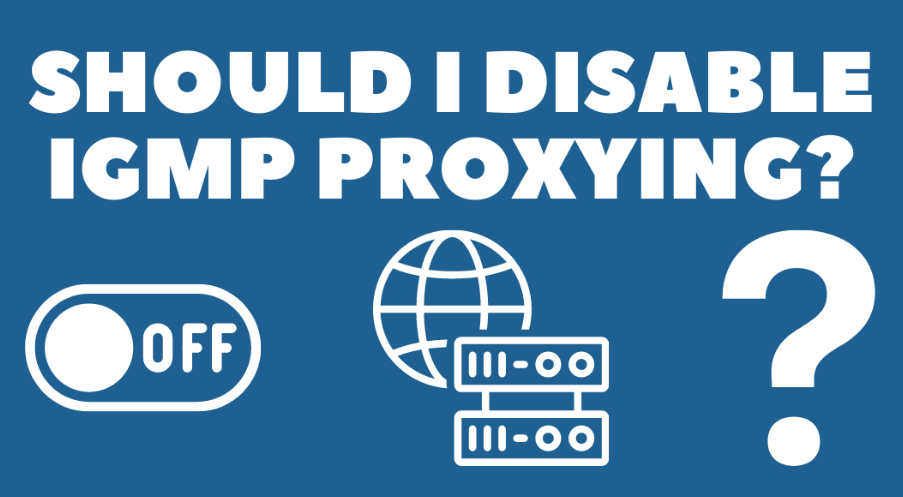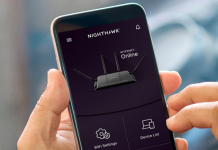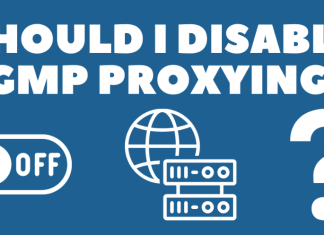Most of us know what proxy means, but only a few know what IGMP proxy is, and even fewer understand what it means by disabling IGMP proxying also known as snooping. Stay with us and you won’t regret sparing your time on this article.
You might have heard about communication protocols such as TCP, and IP, similarly, IGMP is also a protocol called Internet Group Management Protocol. Tech-savvy guys already know why disabling or enabling IGMP proxy is so important. But for those who don’t know what it is, we will proceed with a brief detail on IGMP proxy and its utilization and then we will discuss the subject.
What is an IGMP proxy?
IGMP stands for Internet Group Management Protocol. It is a kind of Multicast IP Routing protocol that are wont to distribute data like audio/video streaming broadcasts to multiple recipients. Using this protocol we can send a single copy of data to an entire group of recipients.
The routers between the source and recipients multiply the data packets and forward their multiple copies wherever the path to recipients separates. To optimize the use of the network, the best routers at which the packets in the data stream are to be multiplied are identified using the Group membership information.
A source host can send data to a multicast group by setting the recipient’s IP address of the datagram to be the multicast group address. In a multicast group, any host can become a source host and send data to a multicast group. There is no need for the source host to register in any way before they can begin sending data to a group. There are different multicast protocols and modes of operation. Many of those are still at an early stage of standardization. However, all of them operate in the same general way, as follows.
- A Multicast Group Membership Discovery protocol is employed by receiving hosts to advertise their group membership to an area multicast router, enabling them to hitch and leave multicast groups. The main Multicast Group Membership Discovery protocols are Internet Group Management Protocol (IGMP) for IPv4 and Multicast Listener Discovery (MLD) for IPv6.
- A Multicast Routing Protocol is employed to speak between multicast routers and enables them to calculate the multicast distribution tree of receiving hosts. Protocol Independent Multicast (PIM) is the most vital Multicast Routing Protocol.
ALSO READ: Halo 5: Guardians Official Launch Gameplay Trailer
How does the IGMP proxy work?
This proxy helps in identifying and enabling multicast routers to extract membership information and subsequently forward multicast packets based on this information. IGMP proxy is composed of interfaces having unique upstream and downstream properties. These interfaces comprise a high-end configuration. The upstream interface allows the proxy to work with the host side whereas the downstream interface allows the proxy to work with the router’s side of the protocol.
IGMP Proxy ensures the following three steps.
- Based on the IGMP membership information, it ensures multicast forwarding.
- Thereafter the router assembles the forwarding packets on the interface.
- Then the proxy creates forwarding entries and adds them to the multicast forwarding cache.
Benefits of Enabling or Disabling IGMP Proxy
Enabling IGMP Proxy: As you can now understand enabling the IGMP proxy prevents generating additional network traffic and reduce the data passage through the switch. Most of the users don’t even bother whether it’s enabled or disabled and it is kept enabled all the time. But if you do an in-depth analysis you will realize the importance of enabling IGMP proxying as it converts multicast traffic to unicast traffic and increases the functionality of connected wireless devices.
Another advantage of keeping IGMP proxy enabled is that group membership reports are directly forwarded to the group. So that when the host joins the address group, its membership report will be sent directly to the router group. Similarly, when a host exit a multicast group, its report will be again sent to the group.
When your network has lots of multicast traffic, it will certainly influence the performance of the network. IGMP proxying optimizes that performance. As the Router itself decides which devices will receive the applicable multicast traffic, resultantly improves the overall network speed.
Disabling IGMP Proxying: On the other hand, if you are not having huge multicast traffic or you do not use mirroring functions. In such cases, leaving IGMP proxying enabled does not have any advantage. It is merely a waste of processing power, as your router will be constantly looking for multicast transmissions that do not exist in your network.
For example in your home-based wireless network which is just used for basic internet and gaming, enabling IGMP proxying will certainly not improve the wifi performance. Rather it will waste resources for your router to listen or monitor for nonexistent type of traffic on your wifi setup. Therefore in such cases disabling IMGP would be useful.
How To Enable/Disable IGMP Proxying?
Now that you understood the benefits of enabling or disabling IGMP proxy, you are in a better position to decide whether to keep your IGMP proxy status enable or disable. However, if you think that disabling this proxy is a better option for you, the following is the easiest way to do so.
Step 1: Open your internet browser, but before that please ensure that you have an active internet connection, and type the URL www.routerlogin.net in the address bar and hit Enter. This will open the login screen for you. Now provide the password and username for your router network and Click on the login button to continue.
Step 2: On the network’s interface go to the network connections and then open the local area connection tab. Thereafter click on Details and provide the IP address of the router. Then the setup page will be opened which will contain the bridging folder. Inside this folder, you will find the Multicast menu.
Step 3: Now Open the Multicast menu and scroll down until you find the IGMP proxy. You will see a tick next to “enable IGMP proxy settings”. Click on this box again to disable the settings. Now click on the apply button and you are all done.
Well, that’s the end of this little guide on IGMP proxying. Hopefully, you have been helped in knowing what you needed to know about IGMP proxy.









